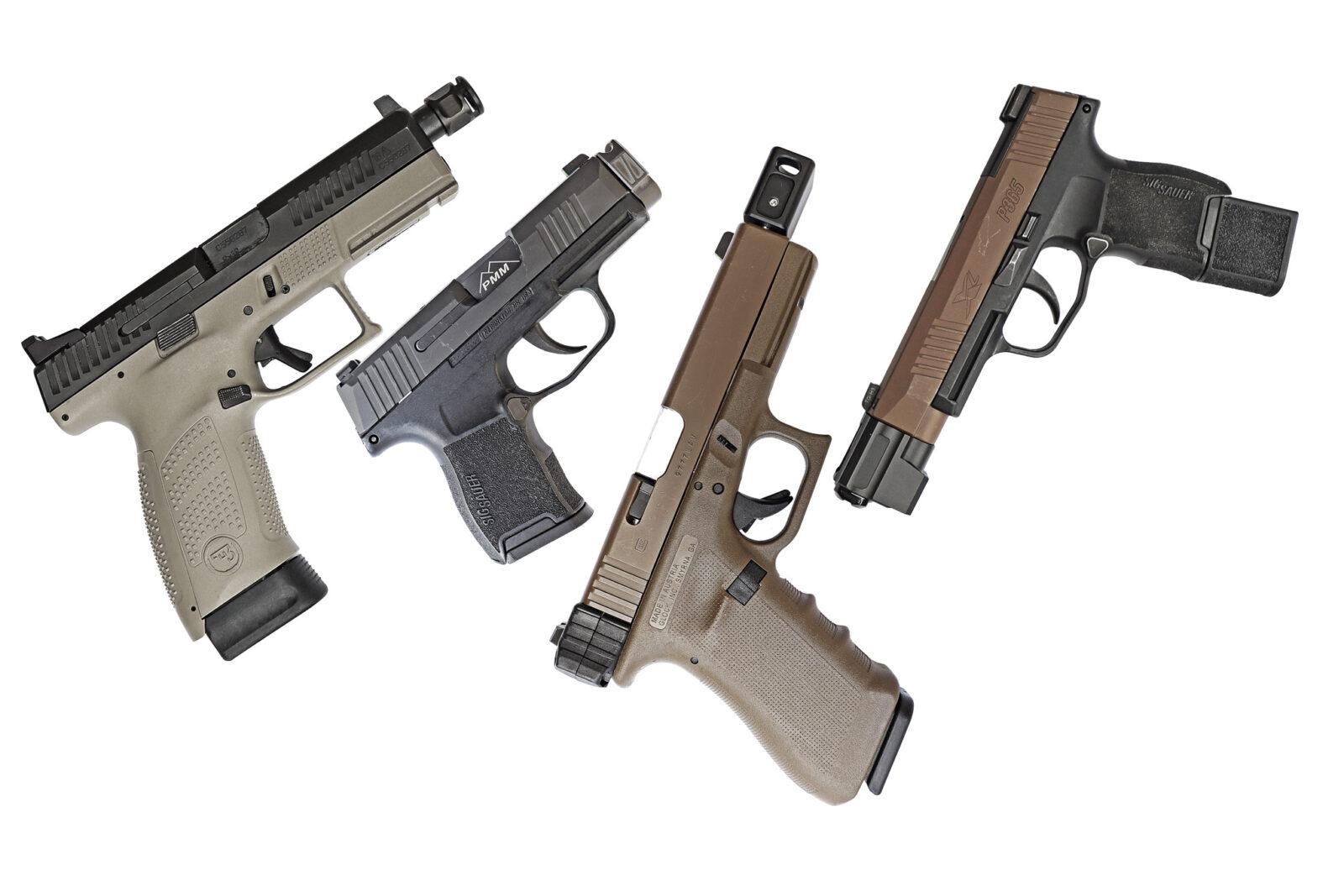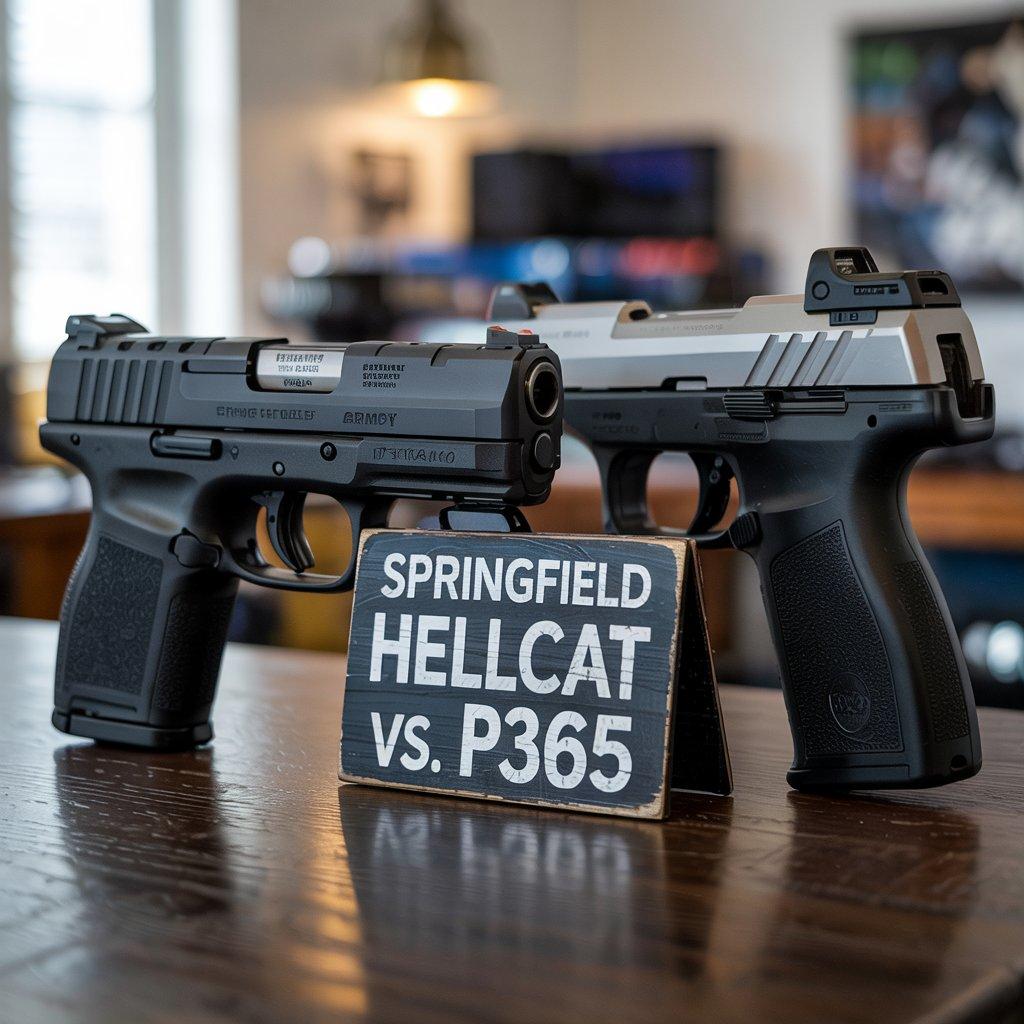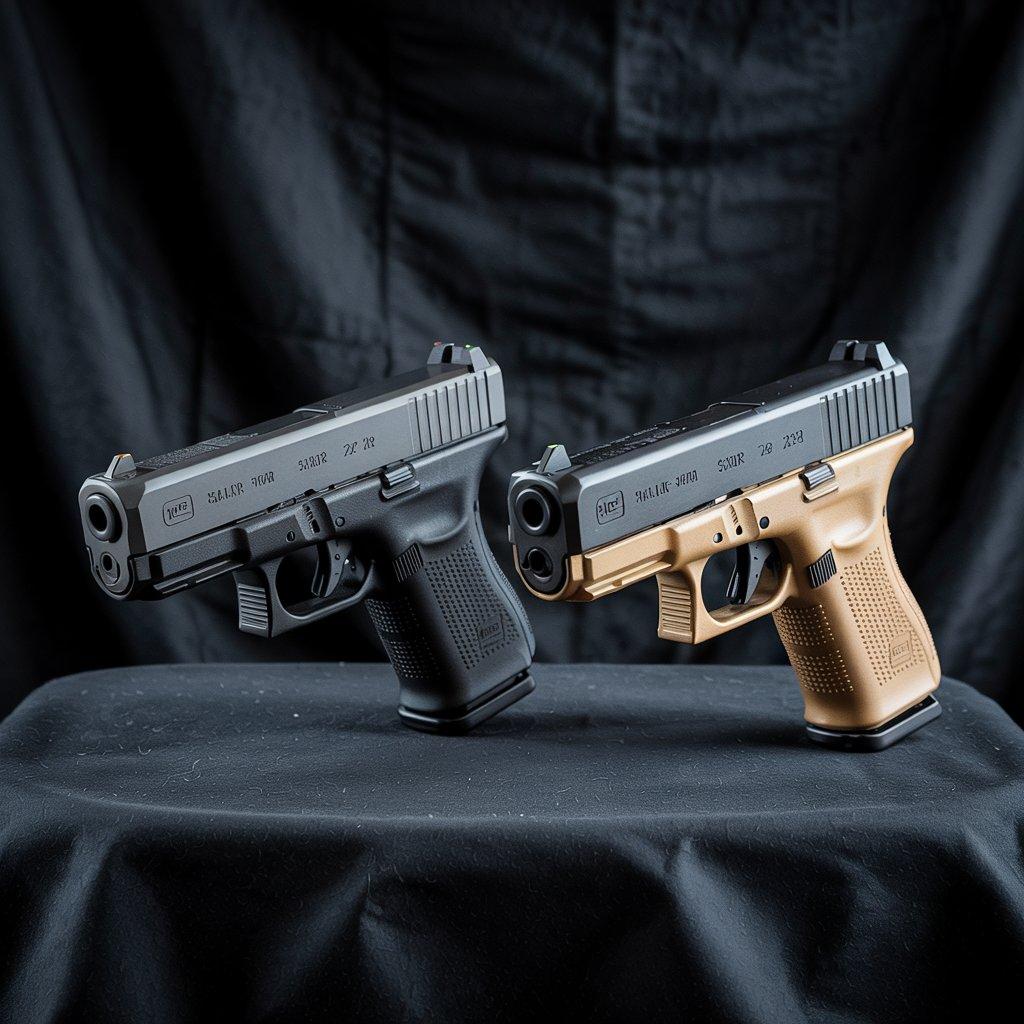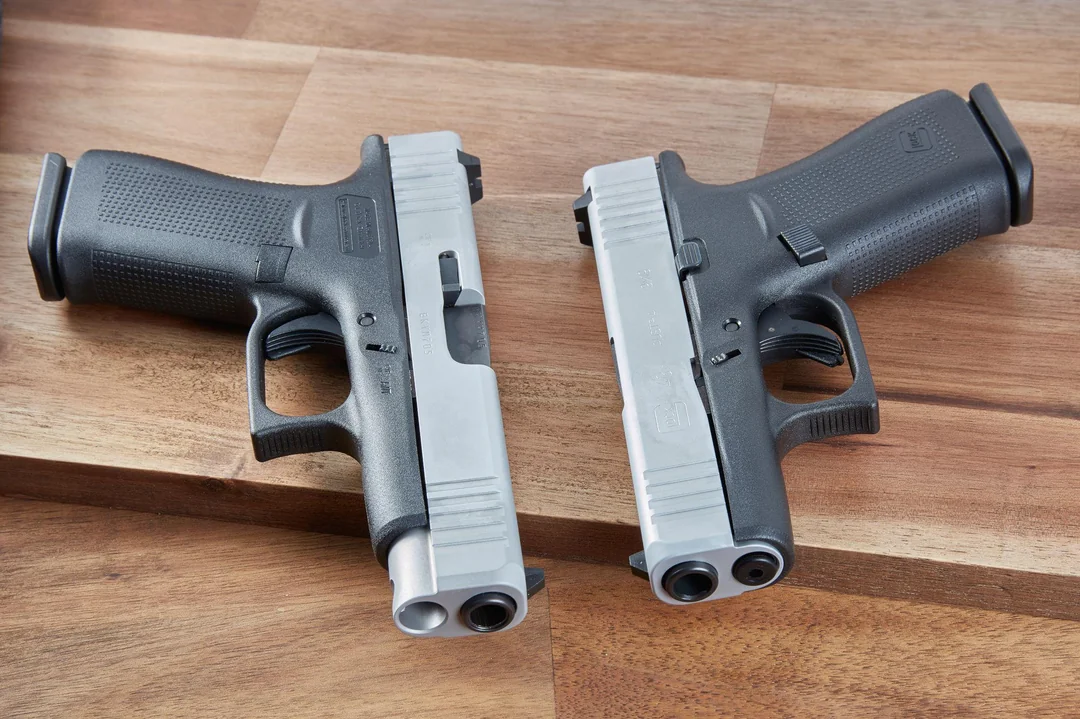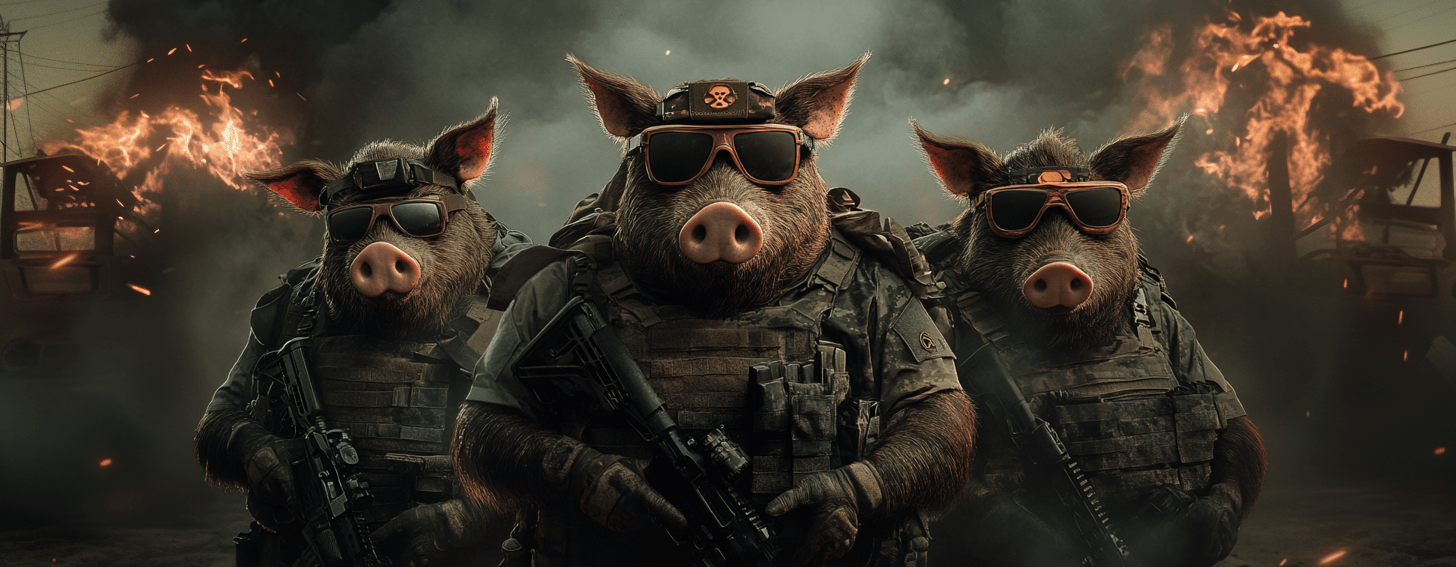Ported vs. Compensated Glock
Introduction
Porting and compensation achieve the same goal through slightly different means: they flatten muzzle rise and reduce recoil, allowing faster follow-up shots. Both share some similarities and some differences, and each has some pros and cons. This article will explain how each works to reduce recoil and flatten muzzle rise, then we will examine the pros and cons of ported vs compensated Glocks to help you find the right gun for your needs!
Ported Glock
When a cartridge is fired, a chain of events is set in motion. The striker hits the firing pin, which is impact-sensitive and ignites. The primer then ignites the powder which begins to violently burn and expand as it does so. This forces the bullet out of the barrel at high velocity. For every action there is an equal and opposite reaction; the mass of the bullet, coupled with its velocity will cause an equal amount of energy to be transferred back to the firearm in the form of recoil. Recoil is a fact of life; it usually isn’t painful but it does need to be controlled to keep the gun on target.
Porting involves cutting small holes (or ports) into the top of the barrel. As the bullet travels down the bore, it is pushed by the hot gases of the burning propellant. The ports allow some of these gases to escape upwards through the ports. This upwardly-escaping gas exerts some downward force on the gun, which reduces muzzle rise, partially taming the recoil of the pistol, allowing you to get back on target faster.
Porting also requires that corresponding ports be cut in the top of the slide to allow gases to escape. Otherwise, they would damage the slide, and provide little actual benefit since the gas has nowhere to go. In the past Glock has manufactured some ported models under the “C” line. These included (but were not limited to) the Glock 17C, 19C, 20C, 21C, 22C, 23C, and more. The only “C”-model pistol currently in the Glock catalog is the elusive, fully-automatic Glock 18.
Compensated Glock
Compensators also reduce muzzle rise, allowing you to stay on target and shoot faster. Rather than a reductive approach like porting, compensators usually require adding something to your gun: the compensator. The compensator is a chamber that allows gases to expand, the directs them in an organized fashion, usually upward, to tame muzzle rise.
Compensators mount to the end of the pistol’s barrel. Often these also require the addition of a slightly longer barrel, which is sometimes threaded. The compensator mounts to the barrel, forward of the slide. This causes an slight increase in overall length of the pistol, a modification of the appearance (which may or may not be desirable), but a well-designed compensator can provide a big return-on-investment in shootability.
As an important note, the “C” in Glocks C-models stood for “compensated,” but was more accurately porting. As we’ve learned, porting involves cutting ports in the barrel, and compensating means adding a compensator to the end of the muzzle. Let’s get into some more of the differences between ported vs. compensated Glocks.
Ported vs Compensated Glock: Differences
Ported and compensated barrels share some similarities and are designed to achieve similar aims. But they also have some critical difference. The first is the size of the modification. A ported gun makes no changes to the external dimensions of the pistol, while a compensator does add some additional length. This can cause issues with holster fits, or may require using a longer holster (for example, using a Glock 17 holster for a compensated Glock 19 or Glock 45). Some compensators attempt to minimize this impact by making the comp as small as possible, but it does add some length.
As a “pro” in the compensator column, adding a compensator is often easier. Adding ports is going to require either replacement of the barrel and slide, or significant modifications to both. Ports will have to be cut in the barrel, as well as the slide, which will require the services of a gunsmith. Though more expensive, replacing the slide and barrel with new ones can likely to be done without having to send the gun off, but may incur great expense.
These two criteria will play a big role in which you choose. Now let’s look at some of the ways in which ported vs compensated Glocks are the same.
Ported vs Compensated Glock: Similarities
Whether porting or compensating, some things will be similar. The first is the decreased muzzle flip. Though compensators are generally regarded as doing a better job of mitigating muzzle rise, this effect can be dramatic with either porting or compensated Glocks. This effect can also be bigger in the larger, heavier-recoiling calibers like 10mm Auto and .357 Sig. This equals a reduction in felt recoil and more important, faster and more accurate shot placement. A ported or compensated barrel can make a huge impact on your shooting!
There is no such thing as a free lunch, however. Both ports and compensators are going to cause increased muzzle flash and noise. Both of these are going to direct muzzle flash upward. In low light conditions this could cause disorientation to the shooter, though it seems like this fear has largely been overblown. With ported barrels, cuts are usually symmetrical and on both sides of the barrel. This can have the effect of creating flash on either side of the sights without having flash directly in front of them. A compensator may direct flash straight up but again, this effect seems to be largely negligible.
Both porting and compensators reduce velocity slightly. With some of the gas propelling the bullet being allowed to escape, there is less gas to push the bullet. In most cases this is neglible, but if your gun already has a very short barrel, you may negate porting or comping.
Increased noise is a real thing, and both ported and compensated guns are louder. Rather than the noise being directed straight ahead, some of it is redirected upward. This equates to more noise at the shooter’s ear, especially when shooting in enclosed, indoor environments. It is questionable whether this would make a real difference in a fight, but long-term hearing loss is a thing. You should always wear hearing protection when shooting, and especially so when shooting ported/comped guns.
Finally, both porting and compensators require some modifications to your gun. This can increase its usability, and your ability to shoot it well, but this can have some downside. First, the cost is probably fairly significant – at least a few hundred bucks. There is also the impact to resale value. Of course, you could get all new, replacement parts to modify and leave the originals as-is, but this increases upfront cost. Modifications of any sort can have unintended consequences, and can impact things like reliability, so keep that in mind, too.
Ported vs Compensated Glock: Which is Right for You?
So which one of these pistols is right for you? That largely depends on you, your use-case, and what compromises you are willing to live with! If you want no modification of external dimensions, porting is the way to go. This will preserve your existing holster fits, and maintain the gun’s current footprint. Of course, it requires modification of the guns barrel and slide…or the purchase of an entire new top-end of the pistol.
A compensator is easier to drop-in – you just need a new barrel and, conveniently, compatible barrels are often sold along with the compensators they work with. This preserves your original, factory parts, so no permanent modification is necessary, though this can still be an expensive route. The biggest downside of a compensator is that it will increase the gun’s overall length. This can prevent the gun from fitting in holsters designed for it, forcing the user to adopt a longer holster, making the gun harder to carry. This may be acceptable for range toys, but can be pretty big negative for some users desiring to comp their carry gun.
Both porting and running a comp provided outstanding recoil mitigation. Both do so at the cost of increased noise and muzzle flash…and financial expense. There is also a third option here: forgoing both porting and compensators. The allure is strong, but on larger guns chambered in 9mm, their necessity is debatable. Plenty of guys shoot at a very high level without ports or comps, but then again, the benefits are undeniable!
Ported vs Compensated Glocks: The Bottom Line
Both ports and comps bring some benefits to the table. Both do so in a similar manner: venting gasses upward to reduce muzzle flip and decrease target acquisition time. Both have some pros: unmodified footprint in the case of ports and no permanent modifications for compensators. Both have some cons: greater cost or permanent mods for ports, greater overall length for compensators. And both share some common negatives, like more muzzle flash and noise.
Choosing one over the other comes down to examining how you use the gun. Is this a carry or duty gun, or a range toy or hunting piece? We are generally loathe to recommend extensive modifications to duty/carry guns, but there is very little harm done to a competition pistol, hunting handgun, or fun-gun! Ultimately, it’s up to you, and you can choose either, both (though hopefully not on the same gun!) or neither.
